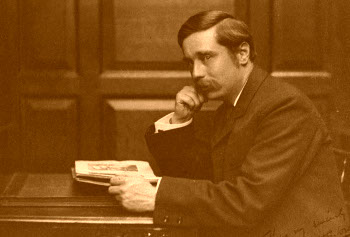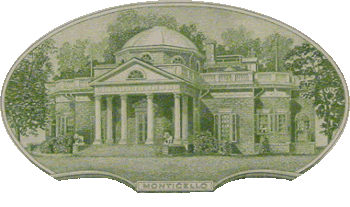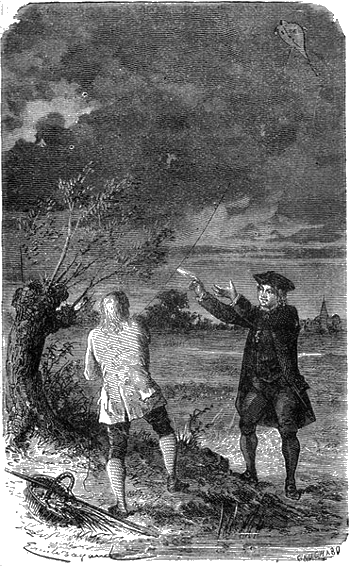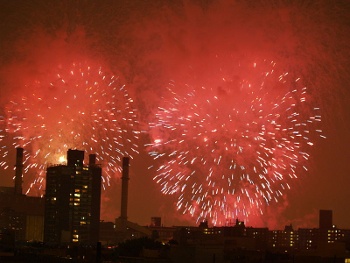Our Technologist Forefathers
July 3, 2012
H.G. Wells wrote
The Shape of Things to Come in 1933. Wells also wrote the screenplay for its 1936 film adaptation,
Things to Come
(William Cameron Menzies, Director).[1-3] In the book and film,
technologists save the world from endless warfare by founding a
world state.

Herbert George Wells (September 21, 1866 - August 13, 1946), circa 1890.
(Photograph at the library of the London School of Economics and Political Science, via Wikimedia Commons)
Few
countries can lay claim to having
scientists, technologists,
engineers or
mathematicians among their founders. In recent history,
Chaim Weizmann, a
chemist, was the first
president of
Israel. The position however, is largely ceremonial, the
Prime Minister being the
state executive.
Since July fourth is
Independence Day in the
United States, it's interesting to look back on our technologist forefathers,
Thomas Jefferson (1743-1826), the third US president, and
Benjamin Franklin.
I wrote about Jefferson and three other US presidents with some technical credential in a
previous article (Presidents of Purpose, February 20, 2012). The other three were
James Garfield (1831-1881), the 20th U.S. President;
Herbert Hoover (1874-1964), the 31st U.S. President; and
Jimmy Carter, 39th President.
Jefferson, who was the author of
The Declaration of Independence, was a prolific
inventor,[4-6]
horticulturist and
paleontologist. My wife and I visited his home at
Monticello, where many of his technical artifacts are displayed, in the
mid-1970s.

Jefferson's Monticello, as depicted on the back of a US $2 bill (Series 1953).
(Via Wikimedia Commons))
My favorite of his many inventions is his
polygraph, a device that allowed him to make copies of his many letters in those days before
photocopiers. Jefferson's polygraph was a variation of the
physionotrace, a device used to trace a person's
silhouette.
Benjamin Franklin wasn't a US president, probably because of his advanced age at its founding, but he campaigned for
colonial unity during the time of the
American Revolution, for which he was labeled "The First American." He likely would have been elected to the presidency, since he was a very popular
politician.
Probably because of he was a
publisher, Franklin was a very vocal opponent of the unpopular
Stamp Act of 1765, which required that all printed materials in the colonies be published on taxed paper. Franklin was
Governor of Pennsylvania from 1785 to 1788, and he notably freed his
slaves and became an
abolitionist.
Like Jefferson, Franklin was a prolific inventor. The
Franklin stove is his invention, as are
bifocals, a
carriage odometer, and the
lightning rod. Franklin used his odometer to measure the distance of
postal routes while he was postmaster for the American colonies. The lightning rod was a result of his many fundamental experiments with
electricity.
Franklin noticed that pointed
conductors discharged at a greater distance than blunt conductors, so he thought that the converse property was also true, and these would be better at attracting
charge. This property is easily verified by any of today's
electrostatic simulation programs. Franklin tested lightning rods designed to this principle at his own home, and he later had them installed at the
Pennsylvania State House, now named
Independence Hall.

The kite experiment is the most popular image of Franklin.
This engraving is from the 1881 textbook, "Natural Philosophy for Common and High Schools," by Le Roy C. Cooley (fig. 82 on page 159).
In this experiment, the hemp kite string, wet with rainwater, conducted electricity from the upper atmosphere to a door key, which was insulated from the string bearer by a silk cord.
The popular image of lightning striking the kite is wrong.
(Via Wikimedia Commons))
"
Vitreous" and "
resinous" electricity were known from
antiquity, but it was Franklin who proposed that these were just different aspects of the same "fluid," which he called negative (resinous) and positive (vitreous); and he was the first to state the principle of
charge conservation.
Franklin's fundamental experiments involving electrostatic charge were recognized by his election as a
fellow of the
Royal Society in 1756, three years after receipt of the Society's
Copley Medal. The
cgs system of units is not used, today, but the cgs unit of electric charge, one
statcoulomb, is called the "franklin."
As a
thermodynamicist, I'm especially fond of Franklin's simple, but sufficient,
experiment demonstrating
evaporative cooling. This involved repeatedly wetting a
mercury thermometer with
ether, and then
evaporating it with a
bellows. On the 65 °
F (18 °
C) day that this experiment was conducted, repeating this operation generated an ultimate
temperature of 7 °F (−14 °C) at the thermometer.[7] Franklin also found that
ice, unlike
water, will not
conduct electricity.

Note - Tikalon is on an Independence Day holiday.
The next article will be posted on Monday, July 9, 2012.
(Photo of fireworks over New York City in 2008 by David Shankbone, via Wikimedia Commons)
References:
- Things to Come (1936, William Cameron Menzies, Director), on the Internet Movie Database.
- Things To Come, free download at Archive.org.
- Please avoid this "Shape of Things to Come" film, H. G. Wells' The Shape of Things to Come (1979, George McCowan, Director), that has a plotline nothing like the novel.
- Jefferson's Inventions and Innovations, Monticello.org.
- Jefferson's Inventions, University of Virginia web site.
- Sarah Diersen, "Thomas Jefferson: A New Perspective," University of Virginia web site.
- Cooling by Evaporation, Letter of Benjamin Franklin to John Lining, June 17, 1758.
Permanent Link to this article
Linked Keywords: H.G. Wells; The Shape of Things to Come; Things to Come; engineering technologist; technologist; world state; London School of Economics and Political Science; Wikimedia Commons; country; scientist; engineer; mathematician; Chaim Weizmann; chemist; President of Israel; Israel; Prime Minister; state executive; Independence Day; United States; Thomas Jefferson (1743-1826); Benjamin Franklin; James Garfield (1831-1881); Herbert Hoover (1874-1964); Jimmy Carter; The Declaration of Independence; inventor; horticulturist; paleontologist; Monticelleo; 1970s; US $2 bill; polygraph; photocopier; physionotrace; silhouette; Benjamin Franklin; British colonization of the Americas; American Revolution; politician; publisher; Stamp Act of 1765; Governor of Pennsylvania; slavery in the United States; abolitionist; Franklin stove; bifocals; carriage odometer; lightning rod; mail; postal route; electricity; electrical conductor; electric discharge; electric charge; finite element software package; electrostatic simulation program; Pennsylvania State House; Independence Hall; kite experiment; door key; electrical insulator; insulated; silk; lightning; vitreous electricity; resinous electricity; Ancient Greece; antiquity; charge conservation; Fellow of the Royal Society; Royal Society; Copley Medal; cgs system of units; statcoulomb; thermodynamics; thermodynamicist; experiment; evaporative cooling; mercury thermometer; ether; evaporation; evaporating; bellows; Fahrenheit; F; Celsius; C; temperature; ice; water; electrical resistivity and conductivity; electrical conductor; fireworks; New York City; David Shankbone.